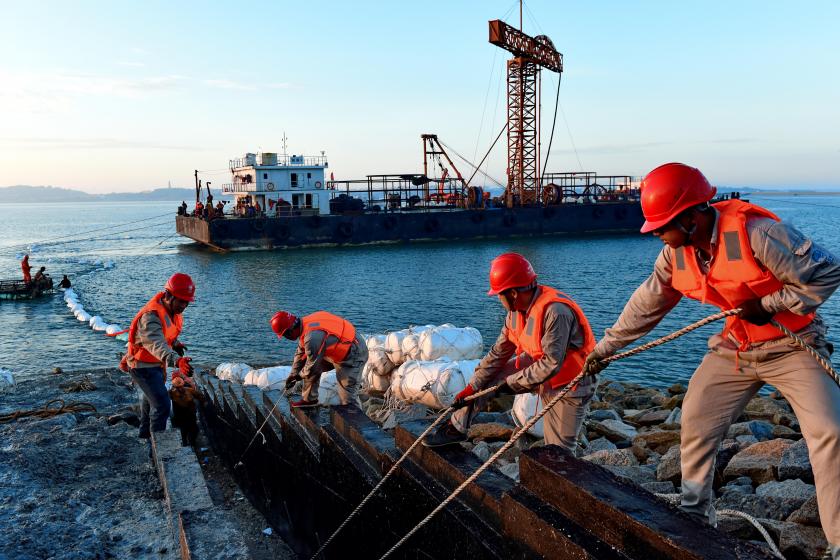New Zayo Submarine Cable Route Adds Faster US–UK Link
Amid growing threats from bad actors, geopolitics, and climate change, Zayo Group announces a new submarine cable route between New York and Manchester.
April 19, 2023

Zayo Group Holdings, a global communications infrastructure provider, last week announced the fastest direct subsea cable network route connecting New York and Manchester. The route avoids backhauling to global Internet hubs in London and Paris, provides a level of redundancy, and reduces transatlantic latency enabling a better user experience.
The new offering is just one more thing enterprises should consider when looking for ways to minimize their company’s business risks when relying on the global network of submarine cables to carry the bulk of their international traffic.
Why all the interest in submarine cables?
There are plenty of features, capabilities, and technology that IT managers can ask their service providers for on their undersea cables. It’s time to dust off or create your must-discuss list.
Roughly 95 percent of intercontinental global data traffic travels over an estimated 486 undersea cables that run across the ocean floor. Globally, the international bandwidth used by network operators has nearly doubled from 2020 to 2022 and has now reached 3.9 Pbps, according to TeleGeography.com. The organization is known for developing submarine cable maps based on data from its Global Bandwidth Research Service.
Service providers typically lease capacity on privately owned subsea cables globally and resell it to enterprises. See these routes and under-construction resources in TeleGeography’s 2023 map.
Submarine cable points to ponder
Given the current state of subsea cable affairs, what should be on IT planners’ wish list?
Cable connection types
Older cables contain copper wires with insulation, while newer ones contain insulated fibers capable of greater bandwidth and higher transmission speeds.
Repair times
If there is an interruption/outage, how long will it take to get back online? But since these cables rest at the bottom of the sea or are placed below the bottom, the time taken to get ships with techs to repair the bottom of the ocean repairs, etc., can take months in some regions. Tonga’s main connection took several weeks to repair, while the cable connecting Tonga’s 170 outer islands to the main island and to each other took many months, leaving people and businesses in those areas without service.
Redundancy
When an enterprise splits its traffic between two or more cables with the same origin and endpoints, it achieves redundancy.
Rerouting
If there are problems isolated to part of the cable, will the fiber technology employed enable rerouting using other capacity in the same cable?
Route diversity
Firstly, can traffic be rerouted to capacity on other undersea cables to its destination(s)? If diverse routes are available, you will also need separate, and preferably carrier-neutral, landing stations.
Media diversity
Ask the subsea capacity lessors if they have access to satellite services for emergency backup scenarios. You may be able to back up some prioritized data via satellite.
A look at the underlying infrastructure of the new submarine cable route
Aquacomms owns and operates submarine trans-Atlantic cables that service providers lease space on to serve Zayo and many others. Aquacomms operates AEC1 and ACE2, allowing it and its lessors to provide much-needed route diversity in increasingly risky times. AEC1 connects Europe, the Middle East, and India. AEC2 was launched in 2022 and began carrying traffic last year.
With the two AEC cables, the owner says it presents a resilient ring-based infrastructure between the East Coast of the U.S, Ireland, and Northern Europe, connecting the hubs of the region’s pan-Atlantic hyperscale data center industry in North America, Ireland, and Scandinavia.
Aquacomms plans to launch AEC3, a subsea run connecting Boston and Slough, Ireland, sometime this year.
Zayo subsea cable health and wellbeing
Zayo launched its Zeus submarine cable last summer. The short route connects the U.K. with continental Europe. The features listed by the company include:
The cable is buried 2- 3 meters under the seabed of the North Sea. Older submarine cables were often buried half a meter below the ocean floor.
The cable is guaranteed to be 100% dual-armored – all the way through the joints – to prevent interference.
Zayo continuously monitors Zeus via Optical Time Domain Reflectometers (OTDR) which are devices used for rapid fault identification, according to the Fiber Optic Association (FOAA). An OTDR is a fiber optic instrument used to characterize, troubleshoot, and maintain optical networks. OTDR testing is performed by transmitting and analyzing pulsed laser light traveling through an optical fiber. OTDRs are typically used on fiber runs of over eight hundred feet in length.
Zayo uses a 24 X 7 guard vessel to monitor any activity along the path.
A final word on the new subsea cable
The new Zayo offering is touted as the fastest, most direct submarine cable linking New York with the U.K. commerce center Manchester in the north of the country. The Zayo leased trans-Atlantic route provides "a direct subsea cable route to North America that avoids backhauling to global Internet hubs in London and Paris, reducing transatlantic latency and enabling a better user experience."
Zayo has leased capacity on the AEC2 cable to create this new route on its expanding global IP network. With capacity on the new submarine cable, the service provider can now provide alternate routes – route diversity - between the U.S. and the U.K.
Related articles:
About the Author
You May Also Like




